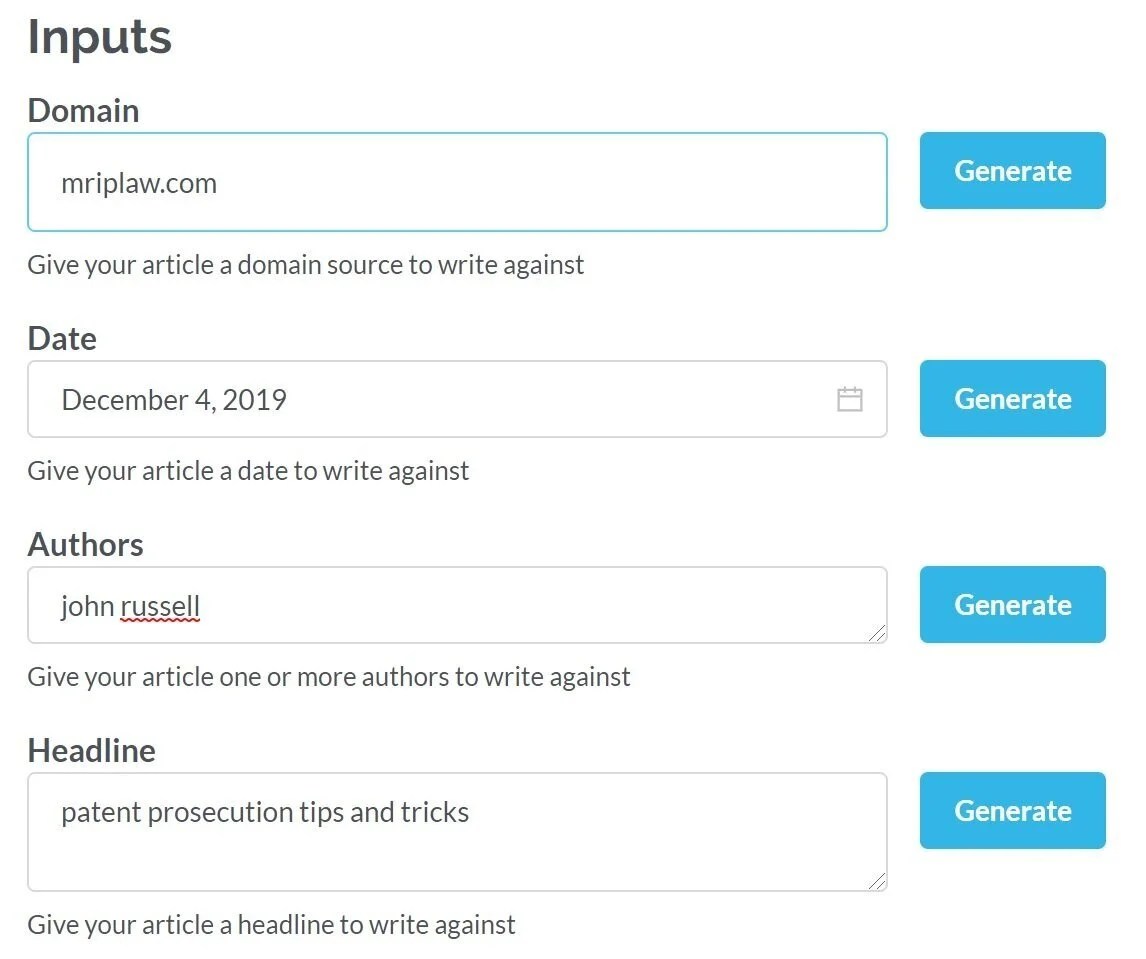There has been much discussion regarding AI tools in patent prosecution. Having studied machine learning techniques at Berkeley, it is exciting to see all of the energy and activity in the industry.
Machine learning tools can generate amazing results if used properly. With all of the focus on AI patent searching and patent drafting, I decided to see if a recently published AI article writing tool could compare to the typical content on this blog. Patent searching and drafting are highly skilled tasks, unlike blog writing. Almost anyone can write a blog as I prove day after day, year after year. The link to the AI tool is here (GROVER).
All you have to do is give the AI tool a title, author, and website to model:

I tried to pick a topic that was clearly in-line with other articles on the blog. The AI generated article is below.
Taxpayers already pay significant amounts in law enforcement costs and preparation fees. Billions of dollars are spent annually and this amount will continue to rise if a lawsuit isn’t resolved. Is a patent prosecution worth the cost? Companies that are innocent should not be stuck with massive legal costs from very strong, patent infringement cases. Should we not grant patent protection to inventions? Are these inventions perfectly new ideas or part of established brand names? As technology develops in larger pieces, the quality of the underlying inventions becomes increasingly important. Most investors will be more inclined to invest in businesses that offer newer, more advanced, better quality products and/or services. When the investor makes that decision, they will take the opportunity to bid against more sophisticated competitors. At the same time, a company can make an investment that is risky by purchasing old, inferior, and full of defects products. Therefore, the quality of the offering reduces the pricing power and therefore decreases the returns for such a business. If you work for or own a business, patent protection is most beneficial when you can prove your business has passed through a relatively long and active approval process. These approvals will establish a competitive advantage in the market place. What if the competition hasn’t received approval but is drawing the attention of investors by the higher prices of their products? This creates an investor loss when they are forced to bid against a company that has not received full approval. There are many scientific criticisms of the leading patent protection theories: No system of patents is perfect; especially, with regards to extending the intellectual property rights of an invention. Once a patent is issued, the inventor may not use the invention or license it to another party, but they can still live off the earnings through patent royalties for many years. Patent holding company companies may not pay dividends, have almost no cash on hand, and will have a negative carry on assets if they cannot attract adequate financing. Patent ownership may cause the company to reduce or reduce the number of employees on its payroll. If patents result in the flood of large lawsuits, the resulting costs and expenses may be prohibitive. The good news for patent seekers and innovators is that the adoption of science, technology, engineering, and mathematics (STEM) programs to educate the public about the need for technologies and inventions will further assist the companies that are producing these technologies. The U.S. government’s use of these programs may move taxpayers toward a more balanced perspective.
If this looks like a great blog post to you, then that explains why I haven’t hit it big in the mainstream media. Granted that this tool was likely not specifically designed to write nerdy patent prosecution blog posts, but the above article is pretty far off.
As to AI patent drafting, all inventions are supposed to be something new. So one could argue that there will always be an inherent challenge for a tool trained on what was done in the past as a way to describe something that has never been done before, and for which no two patent attorneys will ever agree on what defines the optimal patent specification. Of course – that doesn’t mean there aren’t ways to use AI tools to improve efficiency, reduce errors, and speed up the process.
p.s. – I freely admit I took inspiration for this post from Jalopnik. However, no one has seriously suggested replacing Jalopnik articles with an AI tool.

Leave a comment